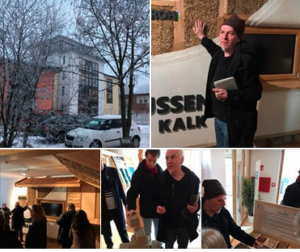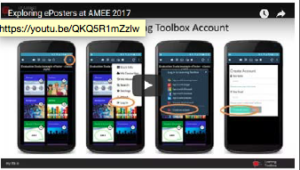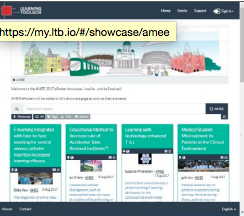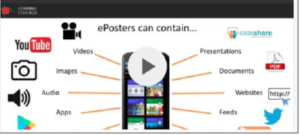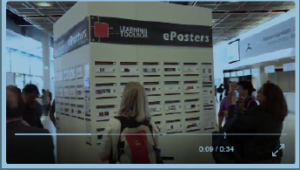One year from the Learning Layers’ final review – Part Two: Working further with the follow-up projects
With my latest blog I started a series of blog posts that reflects on the final review of the EU-funded Learning Layers project (exactly one year ago) and on our progress with follow-up initiatives. The first post looked back at the review event and at the blogs that I had written on the event and on the follow-up activities. At the least it gave a picture of a ‘milky way’ of posts reporting on meetings with different partners – either within ongoing projects or as preparation of new initiatives.
Last week we (the ITB team) had a series of meetings with the developers of the Learning Toolbox and with interested partners in the construction sector in North Germany. In the following I will give a brief summary on the ongoing projects and emerging initiatives that build upon our work with the Learning Toolbox in the Learning Layers project. (For more information on the Learning Toolbox see the website.)
The DigiProB project – Learning Toolbox supports continuing vocational training (CVT) of Bau-ABC
As has been reported in my blogs of the year 2017, the German-funded project DigiProB has started already during the last months of the Learning Layers project. The aim of the project is to develop and introduce digital tools that support training and learning in the continuing vocational training (CVT) schemes in the construction sector. In particular the project focuses on the CVT programmes that upgrade skilled workers to foremen (Vorarbeiter), to specialised construction site managers (Werkpolier) and general construction site managers (Geprüfte Polier). The project had a twofold aim:
- to support the integration of training contents into integrated projects and
- to provide the participants digital tools that support their self-organised learning between course periods.
In the year 2017 major progress was achieved with a working group of part-time trainers (lecturers) responsible of different subject areas. A development website was launched to shape a set of integrated projects and for uploading relevant content. In addition, a working agreement was reached, how to integrate this development website to the course management system of Bau-ABC and how to make the digital content available for the learners. In this arrangement it was agreed that the Learning Toolbox will be used as the learners’ tool (and interface with the learning content). In the meeting last week several points were discussed on the finalisation of the software architecture to be used in the pilot activities in the coming weeks.
The ‘Social competences’ initiative – bringing the Learning Toolbox to construction companies
Another follow-up initiative that was started after the final review was the company-specific pilot with the construction company H. This company is a medium-sized enterprise that has specialised in pipeline-building and installations (water and electricity). The company has several regional offices and its construction teams are working in a wide area in North Germany. The starting point of the cooperation was a feasibility study that was prepared by the developers of the Learning Toolbox (with support from the ITB team). This study made recommendations for the improvement of the system solutions and the software architecture of the company – to improve the sharing of information between the offices and the construction teams. Already in this context the Learning Toolbox played a role. As a spin-off from this study, the partners prepared also a project initiative to use Learning Toolbox as means to improve the communication and knowledge sharing between apprentices and in-company trainers. The pre-proposal had been accepted by the funding body and the partners were invited to submit a detailed proposal for a project that is due to start in Spring 2018. This proposal was discussed last week in the meeting between the partners involved in the project.
From ‘BIM-Table’ to ‘BIM-Koffer’ – preparing hardware solutions for mobile construction teams
One of the pain points for promoting the use of digital tools in construction work was the lack of appropriate hardware that is robust enough and well-protected from bad weather conditions, but at the same time provides access to relevant apps and software. On larger construction sites the companies have tried to introduce ‘BIM-Kiosks’ or ‘BIM-tables’, mainly to support the work of construction site managers and/or supervising engineers. This idea was picked by several Learning Layers partners (including CIMNE, ITB and some craft trade companies) but with the emphasis on similar needs of SMEs, smaller construction sites and mobile teams of construction companies. The construction sector partners have strongly underlined the need for a ‘mobile office hardware set’ (BIM-Koffer) that could provide a WLAN for the construction site and link to internet from remote locations. Whilst the design of such a hardware solution hasn’t fallen into the scope of funding programmes, a pilot team has come up with a plan to prepare a prototype that can be used in small-scale pilots and eventually in funded projects. In this initiative both the access to BIM software and to Learning Toolbox play a role.
Bringing Learning Toolbox into conferences – also in the field of vocational education and training (VET)
One of the delightful news of the year 2017 was the broad-based and successful use of Learning Toolbox as a conference tool to create ePosters (and mini-posters for poster-walls) in the AMEE 2017 conference. This pioneering exercise has been well documented by the introductory videos and by the showcases on the Learning Toolbox site. Based on this success story, another way of using Learning Toolbox with ‘hybrid posters’ was tested in the EC-TEL 2017 conference.
Now, when preparing the 2018 conferences, the ITB team has initiated contacts between the Learning Toolbox developers and organisers of conferences in the field of educational research (or research in vocational education and training (VET)). Even if we may not be able to make major steps forward this year, we are in a good position to start preparations for similar pilots as in the above mentioned conferences
– – –
I guess this is enough updating on the projects and project-like initiatives that involve several partners. On top of this we learned a lot of further work with the Learning Toolbox within the training centre Bau-ABC Rostrup. But that is already a topic for a further blog post.
More blogs to come …
